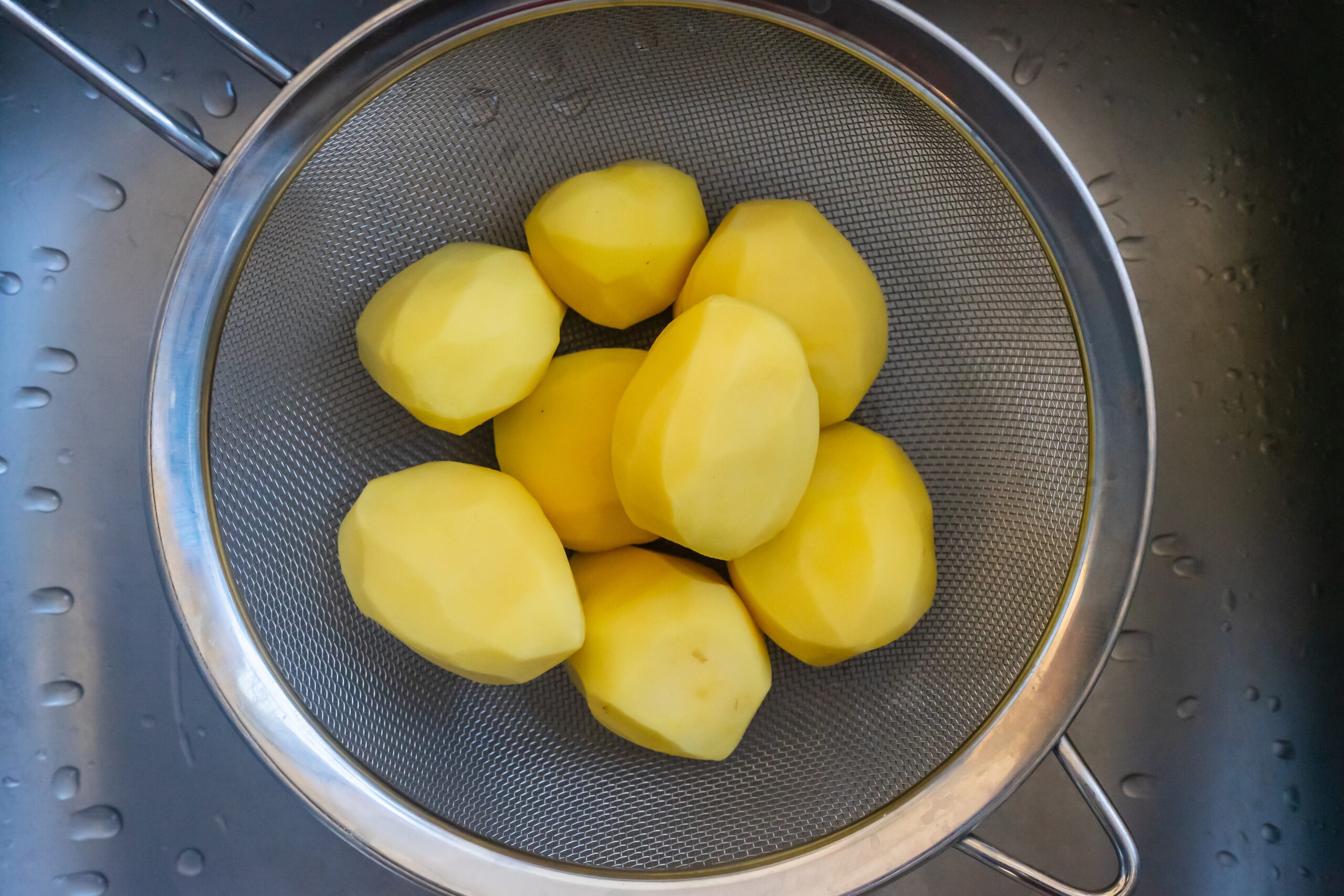Discover the ultimate guide to choose between strainer vs. colander for seamless food preparation. Learn the key differences, benefits, and tips for each option. Find out which kitchen tool suits your needs best!

Table of Contents
ToggleIntroduction
Preparing meals in the kitchen can be a joyous experience, especially when you have the right tools at your disposal. Two essential items that often come into play are strainer vs. colanders. While they may seem similar, each of these kitchen tools serves its purpose. In this comprehensive guide, we will delve deep into the world of strainers and colanders. We’ll explore their differences, highlight their unique benefits, and provide you with all the information you need to make the best choice for your culinary adventures. So, if you’re ready to up your food prep game, let’s dive right in!
Strainer vs. Colander: Exploring the Distinctions
Understanding the Basics
Strainer vs. colanders both are kitchen devices used to separate solids from liquids, but their designs and functions differ. A strainer typically features fine mesh, which allows liquids to pass through while retaining solids. On the other hand, a colander is characterized by larger holes or perforations that permit quicker drainage, making it ideal for pasta, vegetables, and larger food items.
Strainer: Filtering Perfection
When it comes to tasks that demand precise separation, a strainer takes the spotlight. Its fine mesh excels at filtering out even the tiniest particles, making it ideal for tasks like straining sauces, soups, or delicate grains like quinoa. Strainers are also excellent for rinsing grains and fruits.
Colander: Draining Efficiency
When it comes to strainer vs. colander for tasks requiring rapid drainage, a colander is the kitchen tool of choice. Its larger holes facilitate quick removal of liquids from foods like pasta, vegetables, and fruits. The colander’s spacious design allows water to flow freely, ensuring your ingredients are drained thoroughly.
Below is the given benefits of the both strainer vs. colander.

Exploring the Benefits
Strainer's Edge
- Precise Filtration: The fine mesh of a strainer ensures impeccable filtration, leaving you with smoother textures in sauces and soups.
- Versatility: From grains to berries, a strainer is your go-to for tasks that demand meticulous separation.
- Multi-Functional: Beyond straining, it’s also excellent for sifting dry ingredients and dusting desserts with powdered sugar.
Colander's Advantages
- Quick Drainage: The larger perforations of a colander guarantee speedy removal of liquids, saving you precious time in the kitchen.
- Pasta Perfection: When you’re craving al dente pasta, a colander ensures efficient draining without overcooking.
- Generous Capacity: With its roomy design, a colander can handle large quantities of ingredients, making it perfect for big gatherings.
The Decision-Making Process: Which One to Choose?
When deciding between a strainer vs. colander, consider the type of recipes you frequently prepare. If you often find yourself dealing with fine ingredients that require meticulous filtration, a strainer is your kitchen ally. On the other hand, if you frequently cook pasta, vegetables, and other larger foods, a colander is the tool that will shine in your culinary endeavors.
Below are the tips given on the efficient use of both strainer vs. colander.
Tips for Efficient Use
Strainer Success
- Always match the size of your strainer to the quantity of ingredients you’re handling to ensure optimal filtration.
- Use a spatula or the back of a spoon to gently press ingredients against the mesh, helping to extract more liquid.
- For easy cleanup, rinse the strainer immediately after use to prevent particles from drying and sticking to the mesh.
Colander Mastery
- Shake the colander gently after draining to remove excess water from your ingredients.
- To prevent small items from escaping through the holes, line the colander with cheesecloth or a coffee filter.
- Invest in a collapsible colander for easy storage and convenience.

Conclusion
In the battle of Strainer vs. Colander, there’s no definitive winner – it all depends on your cooking style and the tasks at hand. The key is to understand their unique features and benefits, enabling you to make an informed decision that suits your culinary needs. So, whether you’re whipping up delicate sauces or cooking up a storm with pasta, you can now confidently choose between strainer vs. colander kitchen essentials.
FAQs
Q. Are strainers and colanders dishwasher-safe?
A. Yes, many strainers and colanders are dishwasher-safe. Before tossing them into the dishwasher, it’s always a wise move to consult the manufacturer’s guidelines for their specific dishwasher compatibility.
Q. Can I use a colander to strain fine ingredients like quinoa?
A. While a colander is designed for quicker drainage and is ideal for larger items, straining very fine ingredients like quinoa might not yield the best results. It’s recommended to use a strainer for such tasks.
Q. Can I use a strainer for draining pasta?
A. Absolutely! While a colander is specifically designed for draining pasta, a strainer can also effectively remove excess water from your pasta. Just ensure the mesh is fine enough to prevent the pasta from slipping through.
Q. Can I use a colander to sift dry ingredients?
A. Yes, a colander with larger holes can be used for sifting dry ingredients like flour and powdered sugar. However, for more precise sifting, it’s better to opt for a dedicated sifter.
Q. Which option is better for rinsing fruits and vegetables?
A. A strainer is the better choice for rinsing fruits and vegetables. The fine mesh prevents smaller particles from escaping, ensuring a thorough rinse.
Q. Is there a size recommendation for colanders and strainers?
A. The size you choose depends on your typical cooking quantities. If you often cook for a larger group, opt for a bigger colander. Similarly, choose a strainer size that matches the amount of ingredients you usually handle.
